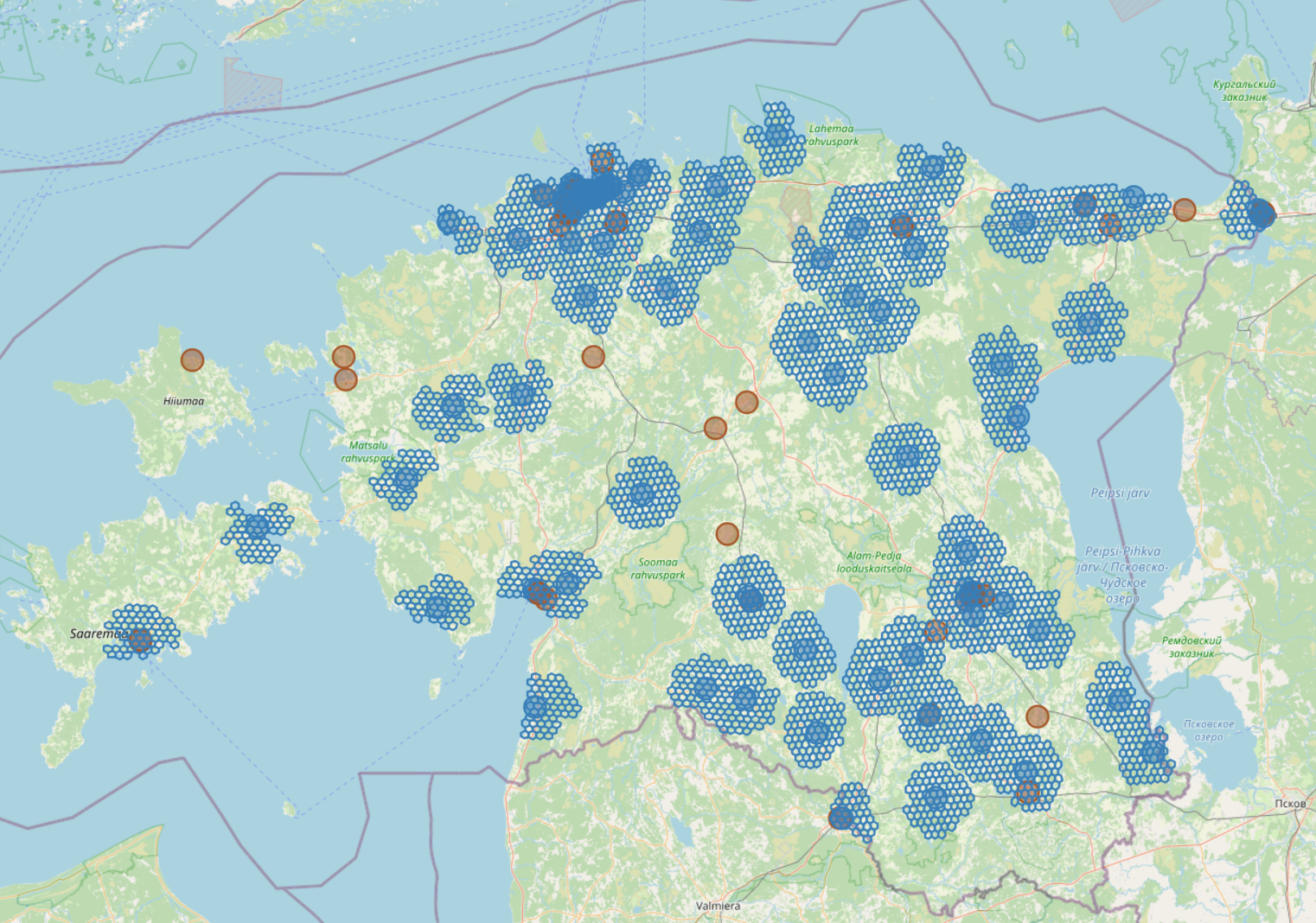The Future of Spatio-temporal Accessibility of Public Services

Two major challenges can be identified in ensuring spatio-temporal accessibility to the public services. The first is the expected demographic change. Accessibility to public services and their coverage are affected by urbanisation, urban sprawl and people owning multiple residences (city and country homes) in Estonia. The second challenge lies in improving services by cutting costs and increasing their quality without compromising the accessibility. Additionally, we need to consider the potential of more capable municipalities in providing services also to the not so well-off neighbouring municipalities.
The distribution of the population has changed significantly over the past decades in Estonia, which is why the existing and in poor shape service-providing buildings, such as schools, houses of culture, nursing homes, might not be situated in the most suitable locations anymore. Therefore, we must evaluate the coverage or client base of various service centres, the types of services in demand, the spatio-temporal accessibility of these services to citizens, but also how could the coverage further change in future, considering the shifts in regional demography.
According to the national planning baseline study conducted in 2023, declining and ageing populations, along with the negative consequences they entail, are primarily concentrated in areas of lower socioeconomic value. However, the establishment of a future-proof services network and an attractive living environment could potentially alter these trends. A study conducted by the Ministry of Finance revealed that the most likely demographic segment to consider moving to the countryside is a 30−49-year-old Estonian male who possesses a higher-level education, earns a high income and has children. The trend of new communities is also on the rise, often accompanied by the creation of new jobs in the creative industries sector. Many people would be interested in moving to the countryside, yet they are often deterred by the lack of accessibility to high-quality public services.
The primary objective of the 2017 administrative reform in Estonia, which reduced the number of local municipalities from 213 to 79, was the creation of larger and more capable local municipalities. The purpose of this change was to make it easier for municipalities to provide high-quality public services, ensure their ability to compete with one another and independently fulfil their legal duties. The administrative reform assessment, conducted five years after the reform, highlights that while the quality and variety of services have improved, their spatial accessibility has decreased, and the demand for human-centric and needs-based service management has increased. Additionally, the assessment emphasises that a lot of focus should be directed towards the development of e-services. The 2021 public services audit by the National Audit Office of Estonia also underscored the need to prioritise the provision of needs-based services and the development of e-services. The National Audit Office also emphasised the importance of preserving services over service institutions.
In the Future for the Next Generation of Teachers research topic, the Foresight Centre noted a necessity for developing comprehensive overviews of services in sparsely populated areas, where public services like schools, libraries, houses of culture, and post offices can be housed in energy-efficient community buildings. The future accessibility of essential services is largely dependent on the potential for combining different public services in a way that allows highly capable services to support less-capable ones.
This research topic focuses on the current spatio-temporal accessibility of public services, how this might change in the future and which models of service provision might prove to be the most beneficial in the future.
The primary questions of the research topic are:
- What is the current spatio-temporal accessibility of public services and what will it be in the future?
- Which key factors are crucial for the future of regional management of public services? What are the potential scenarios for the evolution of public service accessibility by 2050?
- What are the economic and social implications of the different scenarios, such as the increase or decline in community spirit?
The study is strongly linked to other research topics of the Foresight Centre, most notably the Future of Regional Economy in Estonia and the Future for the Next Generation of Teachers.
News linked to the research
-
16.06 2025New map application: four out of five people could walk to their nearest kindergarten, primary school and library
The Land and Spatial Development Board, the Ministry of Regional Affairs and Agriculture, the Foresight Centre and Statistics Estonia have created a map application of public services. Anyone can use this to find out how far the nearest kindergarten, school, family doctor and other public services are from their home.

 An independent think tank at the Riigikogu
An independent think tank at the Riigikogu 